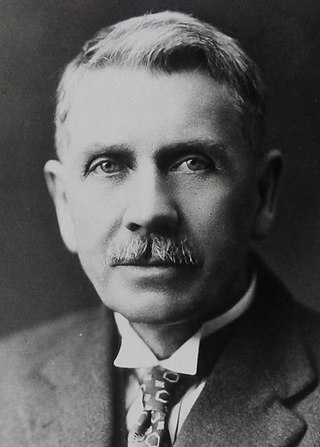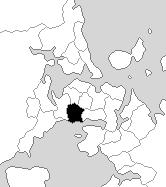
George William Forbes was a New Zealand politician who served as the 22nd prime minister of New Zealand from 28 May 1930 to 6 December 1935.
The United Party was a political party in New Zealand. It was founded in 1927, party out of the remnants of the Liberal Party, and formed the United Government between 1928 and 1931, and the United–Reform coalition Government between 1931 and 1935. In 1936, it merged with the Reform Party to form the National Party.
The Reform Party, formally the New Zealand Political Reform League, was New Zealand's second major political party, having been founded as a conservative response to the original Liberal Party. It was in government between 1912 and 1928, and later formed a coalition with the United Party, and then merged with United to form the modern National Party.

Sir Joseph George Ward, 1st Baronet, was a New Zealand politician who served as the 17th prime minister of New Zealand from 1906 to 1912 and from 1928 to 1930. He was a dominant figure in the Liberal and United ministries of the late 19th and early 20th centuries.

Joseph Gordon Coates served as the 21st prime minister of New Zealand from 1925 to 1928. He was the third successive Reform prime minister since 1912.

The 1922 New Zealand general election was held on Monday, 6 December in the Māori electorates, and on Tuesday, 7 December in the general electorates to elect a total of 80 MPs to the 21st session of the New Zealand Parliament. A total number of 700,111 (87.7%) voters turned out to vote. In one seat there was only one candidate.

The 1928 New Zealand general election was held on 13 and 14 November in the Māori and European electorates, respectively, to elect 80 MPs to the 23rd session of the New Zealand Parliament.

William Andrew Veitch was a New Zealand politician. He began his career in the labour movement, but became a strong opponent of more militant socialism, and rejected the radical views held by many of his colleagues.

Sir Thomas Mason Wilford was a New Zealand politician. He held the seats of Wellington Suburbs then Hutt continuously for thirty years, from 1899 to 1929. Wilford was leader of the New Zealand Liberal Party, and Leader of the Opposition from 1920 to 1925.

Harry Atmore was a New Zealand Independent Member of Parliament for Nelson in the South Island.

Sir George Matthew Fowlds was a New Zealand politician of the Liberal Party.

George Laurenson was a New Zealand Member of Parliament for Lyttelton in the South Island.
Grey Lynn is a former New Zealand parliamentary electorate, in the city of Auckland. It existed from 1902 to 1978, and was represented by nine Members of Parliament.

Roskill was a New Zealand parliamentary electorate, from 1919 to 1996. The electorate was represented by eight Members of Parliament.

Sir Ethelbert Alfred Ransom was a New Zealand politician of the Liberal Party, then its successor the United Party, and from 1936, the National Party. He was a cabinet minister from 1928 to 1935 in the United Government, and was acting Prime Minister in 1930 and in 1935.

Alfred James (Fred) Murdoch was a New Zealand politician, first as an Independent Liberal then of the United Party, and from 1943 the National Party. He was Minister of Agriculture and Minister of Mines from 1930 to 1931 in the United Government of New Zealand.
Marsden was a former parliamentary electorate, in the Whangarei District and in the Northland Region of New Zealand, which existed from 1858 to 1972. Upon its abolition, Marsden was replaced with the Whangarei electorate.

The 23rd New Zealand Parliament was a term of the New Zealand Parliament. It was elected at the 1928 general election in November of that year.

The 1930 Invercargill by-election was a by-election during the 23rd New Zealand Parliament in the Southland electorate of Invercargill. The by-election occurred following the death of Sir Joseph Ward on 8 July 1930. The by-election, which was held on 13 August, was won by the late Prime Minister's second son, Vincent Ward against James Hargest.
















